Ardra Balachandran
Every year, on Christmas Eve, Joulupukki (Yule Goat) leaves his residence situated in the mountains of Korvatunturi and comes knocking on the front doors of Finnish homes asking the same question, “Are there any well-behaved children here?” One look at the super star status Finland enjoys in the global education scenario would tell you that the answer to Joulupukki’s question is always a yes.
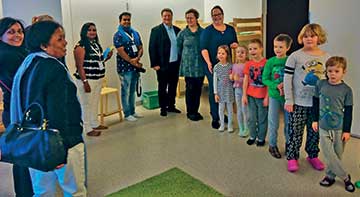 For the layperson, Finland is a Nordic country tucked away in one of the coldest regions of the world. But any educator worth his/her salt would know that the country is one to rank consistently in the top spots in the Programme for International Student Assessment (PISA), a worldwide study done by the Organisation for Economic Cooperation and Development (OECD) among 15-year-old school pupils. As a nation, it provides one of the warmest learning environments possible for its children.
For the layperson, Finland is a Nordic country tucked away in one of the coldest regions of the world. But any educator worth his/her salt would know that the country is one to rank consistently in the top spots in the Programme for International Student Assessment (PISA), a worldwide study done by the Organisation for Economic Cooperation and Development (OECD) among 15-year-old school pupils. As a nation, it provides one of the warmest learning environments possible for its children.
Finland considers its children as national treasure. This is exactly why their education is mostly done through state schools. All requirements of students, whether food, learning materials or daily commute, is taken care of by the state. Even the very few private schools in Finland get funded by the state and are expected to adhere to the policies and processes laid out by the government. No child is made to commute more than five kilometres; every locality has a school. Smita Deorah, Co-founder & CEO of Leadership Boulevard, an organization with a mission to provide affordable and high quality education to students in rural India says, “As per the last OECD report, Finland spends as much as USD 10,547 per student, almost 7% of their GDP. Even in the years when they went through a GDP drop, their spending on education stayed; that’s how seriously they invest in their future.” This is a crucial reason behind the Finnish success story.
Chrysalis School Leaders Delegation
As an education research and innovation organization which focuses on delivering quality holistic education in Indian schools, Chrysalis (formerly EZ Vidya) works on various projects with major companies. One such collaboration was with Nokia. The company, which has its headquarters in Finland, was able to put the Chrysalis team in touch with some key people in the Finnish education system. The country was already well-known globally as a consistent PISA test topper. Thus, in 2012, an enriching process was set in motion, that offered Indian teachers the opportunity of learning how to teach and teaching how to learn.
In each edition of this initiative, a team of 15 to 20 participants go on a high-energy education expedition which involves rigorous immersion visits to various schools in Finland. According to Chitra Ravi, Founder and CEO of Chrysalis, the delegates are senior leaders from private and public school systems from across India, who come to gain first-hand experience of education delivery in the Finnish school system and also to gain exposure to progressive ideas and innovative models.
Uma Maheshwari, Correspondent of Naahar Public School in Villupuram, says that while going on this journey, she was as curious as a kindergarten child about what the Finnish were doing so differently for their children to perform so well. “We slog it out in our schools, yet we are so far behind. It was quite obvious that there would be a lot to learn.”
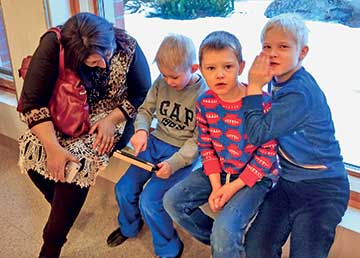 Child centric versus teaching centric
Child centric versus teaching centric
E. Prasad Rao, Chairman of Paramita and Iris World Schools, was a participant of the delegation in 2013. He says that the immediate contrast between the Indian and Finnish education systems is that the former is teacher centric while the latter is child centric. In Finland, everything is done keeping the child in mind; even teachers’ training is aligned with that. “Unfortunately, our system is more class-bound with the focus only on the knowledge domain. We only want to impart as many lessons as possible to our children,” he laments.
He was impressed by the flexibility the students and teachers had with respect to the curriculum. In one of the schools, when the delegates joined the class, the geography teacher instantly started teaching about India. “The children made the appropriate connection too and asked so many sensible questions,” says Rao. The Finnish system allows students to choose the subjects they want to study; it is their right to learn what they like.
Ganesh Subramanian, Director of Chrysalis explains that they have a concept of ‘less is more.’ “They do not want to burden the students with academics. If children enjoy and understand what they are doing, any learning outcome can be achieved.” Saveetha Veeraiyan, the Owner and Director of The Pupil – Saveetha Eco Schools, who went to Finland last year, says that while the content taught appears to be low, it is handled with such great depth that there is maximum understanding. Compulsory education begins only at the age of seven and students get exposed to foreign languages only from Class III. Geetha Jayachandran, Principal of Yuva Bharathi Public School in Coimbatore and a delegate last year, says this is a significant policy: “In formative years, mother tongue plays an important role. It should not conflict with another language.”
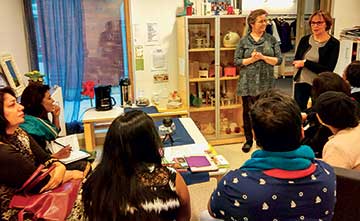 Life is more important than lessons
Life is more important than lessons
In theory, all of us agree that education should make children better human beings and equip them to live life well. But the sad reality of the Indian education system is that we only train children to compete and earn degrees.
URC Devarajan, Secretary of URC Palaniammal Matric Higher Secondary School in Erode, attended the first edition of the Finland delegation and was impressed by the kind of life training Finnish children get in schools. “Even children in kindergarten are encouraged to go play outside in temperatures as low as -15° C. They are clear that preparing the kids to deal with their lives ahead is the most important objective of education.” They also have indoor sports arenas – dedicated spaces which children can use when they cannot step out due to unfavourable weather. Yoga, gymnastics, swimming – a lot happens there under the expert supervision of trainers.
The children also are trained in skills such as stitching, cooking, carpentry, and plumbing. There are laboratories devoted for these lessons and it is part of their curriculum. They are made to iron clothes; they go on hiking trips and learn how to make a tent.
After every 45-minute class, there is a 15-minute recess. This elucidates the approach they have to learning; they do not have the false notion that children learn only when in class or when ‘being taught’. Geetha says, “Down to the bell that goes before and after the class being a melodious one, and not the usual ‘ding dong,’ each and every detail is given attention.” There are also small performance spaces at various spots in all schools. If any child feels like demonstrating a talent, he just needs to go up there and perform. There are no restrictions whatsoever. Undoubtedly, they grow up to be uninhibited personalities.
Productivity versus paper degrees
Vocational training is given utmost significance in Finnish schools. They start these sessions when they are in class V. After class IX, they get to choose between a high school and a vocational school. Smita Deorah says, “As many as 50% students who clear Class IX go for vocational schools which are just as funded as high schools.”
Take the case of Tamil Nadu. Close to 8 lakh students complete +2 every year in this southern state of India. Among them, only around 3.5 lakh go to college. The rest of them, having had no vocational training until then, drop out and get into jobs that involve no special skill. Devarajan argues that this is why it should be made compulsory for Indian students to attend a skill development course before they turn 15. As a first step, he has initiated student visits to agricultural farms and handloom factories from his school. He is hopeful, “We are slowly trying to bring in an attitude change in students to go for vocational training.”
Say no to ranking
The Finnish system does not believe in ranking children. Although exams are conducted regularly to analyze a child’s learning curve, the grades are used only for individual improvement, and not for comparison with others. Uma Maheshwari says that their children are exceptionally expressive and creative because they learn in an atmosphere of zero pressure. One is competing with no one else but oneself. India has a long way to go in this department; most of our schools still publish regular rank lists causing parents and children to keep comparing.
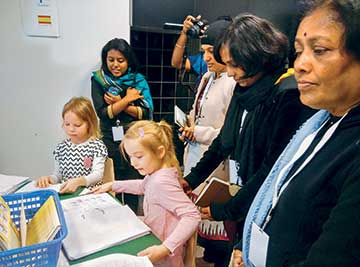 Better teachers, better learning
Better teachers, better learning
The two countries are poles apart if you take into account the rigour that goes into the making of a teacher. As Smita Deorah puts it, “You need to have really good grades in high school, get selected into the top universities and then make it through a rigorous program before you get to enter a classroom. Making it to any of these is as tough as getting into IIT or IIM in India.” So it shouldn’t surprise us that the professional competency of Finnish teachers is extremely high. They mould the future of Finland, its children, so they get paid commensurately as well. In our country, teacher salaries are admittedly getting better in the government/aided sector. But this development adds to management corruption in dishing out teaching jobs for money in millions, and not as much to getting the right people for this significant role. In the private sector, however, most schools pay the teachers poorly, in turn attracting a talent pool which is alarmingly low in quality.
Improving the staff rooms in her school was one of the first things Uma Maheshwari did after coming back from her trip to Finland. “Taking care of the teachers is one of the most effective ways to improve learning,” she says. A space where teachers can relax and access quick references, without having to go to the library, is a must in her opinion.“ I sacrificed a lab to achieve this,” she quips.
Devarajan adds that reducing the intervention of management in academic activities and giving autonomy to the Principal and teachers is one of the key changes he effected in his school, post this program. Uma is trying to bring in more guest speakers to reduce the monotony of listening to the same people throughout the year.
Inclusion and collaboration – the keywords
Yet another commendable aspect of the Finnish system is that they have an inclusive approach. Children with special needs study along with others, and each school has at least two trained teachers to cater to them. There are also exclusive spaces in all schools to facilitate their learning.
Finnish educators also have the liberty to divide the classes into groups according to their knowledge assimilation. As Prasad Rao puts it, “Children who need more time to learn a particular lesson can have it and the groups come back together when their knowledge levels are aligned.” Teachers do this strategically by using different methods to teach children with different response levels, so that there is no risk of labelling or alienating ‘poor performers.’
When there are more brains working on a task, the goal is achieved more quickly. There isn’t a single employer in the world who doesn’t seek team spirit as a characteristic in their prospective employees. Forget the workplace, even to live life in general; team work is essential because family and relationships also demand that. Saveetha Veeraiyan put a full stop to the system of ‘homework’ at her schools after she came back from Finland. Instead, students get together as groups and complete their tasks while in school just as they do in Finland. “There is more pride of ownership and the learning is much deeper; a total win-win situation,” she says. Teachers are also specifically instructed to motivate groups, rather than individuals, in class.
Geetha Jayachandran borrowed the concept of collaboration from Finland and now makes her teachers also use it effectively. Teachers of different subjects come together and undertake a theme-based project which requires an interdisciplinary approach. In the course of its completion, they pick up nuggets from each other’s stream of knowledge, of course. Apart from that, they invariably exchange information on the quantum of learning that happens in each subject, every year, from a student perspective. It then becomes a teamwork on the part of the teachers to send the children with an appropriate knowledge level from a lower class and to build on the knowledge they already have, in the upper class.
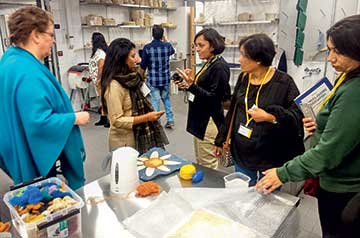 Freedom is responsibility
Freedom is responsibility
The one stark difference between our system and theirs, as every participant in this program points out, is the freedom quotient which manifests in numerous ways. Finnish students enjoy absolute freedom and the teachers are present only to facilitate their learning process. Consider this: it is common for Finnish children to sit in the class with their legs up on the desk. In India, this is unthinkable, given that our notion of respect and discipline is deeply rooted in its physical expression. But no one has to impose discipline in a Finnish classroom. Saveetha says, “They don’t have to be asked to be silent. They are attentive and never make their teachers raise their voices.”
Finnish schools also allow children to use mobile phones while in school. But the students, who have been integrated well in the free atmosphere, use it responsibly only to learn more about the new things they heard in class. Uma strongly believes that our system has a long way to go before we give that kind of freedom to our students.
Technology for education, used right
One of the key highlights of all education improvement plans in India is better use of technology. Whether it is in the context of infrastructure or the mode of teaching/learning, we place a lot of emphasis on it. Prasad Rao points out how the Finnish use technology only appropriately. “They do not place technology in the forefront like we do. They use it in an activity based manner, to the context.” Of course, as far as access to technology is concerned, we are always trying to catch up whereas they are already on the top of the game. With choice, comes freedom.
Keep improving
In Devarajan’s opinion, the program should be followed up with more rigorous work in the schools. Organizations like Chrysalis can take the lead in conducting follow up workshops to help leaders incorporate their learning from Finland in their respective schools.
Saveetha says: “Some more interaction on the evaluation aspect – ours is totally marks based whereas they look at the overall personality of the child – would have been beneficial.” Smita opines that the schedule was jam packed with immersion visits such that there wasn’t enough time to reflect with the other delegates.
The program has had five editions so far with only Indians participating in it. But with the overwhelming enquiries from countries like Singapore and Sri Lanka, the sixth delegation will have a few international participants this year. The Chrysalis team is keen to make the delegation more diverse in representation. Moving the delegation visits from being centred in Helsinki in the initial years, to schools in Jyväskylä last year, is also a step in the direction of diversity.
Ask Chitra if they have expansion plans to take the delegation to other countries like Shanghai, which have performed well in the recent PISA scores, she is quick to reply. “Of course, but our dream is much bigger. We see ourselves bringing the delegation inwards and making the world see and learn from what the Indian education system has to offer. That time will come soon.”
The author is a freelance media professional based in Kochi. She is a post graduate in Mass Communication from the University of Hyderabad and writes on topics varying from gender and education to food and entertainment. She can be reached at ardramaanasam@gmail.com.
